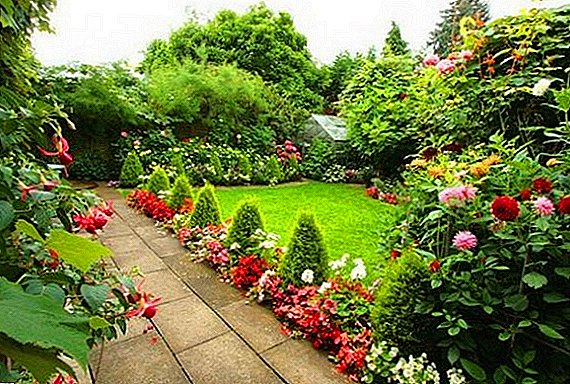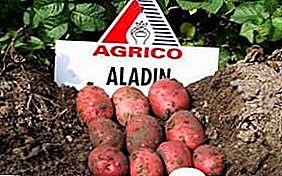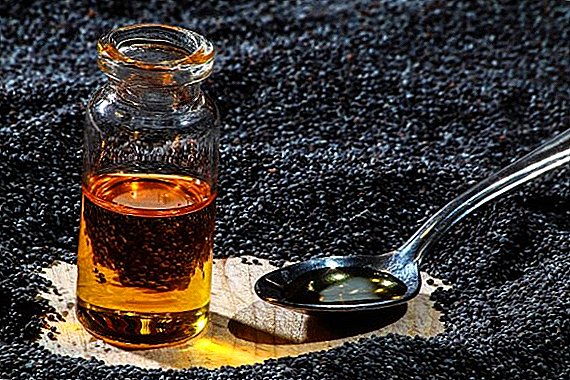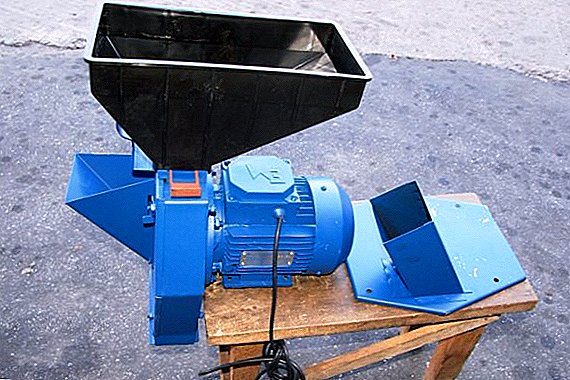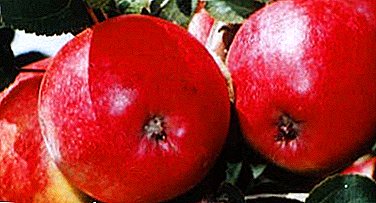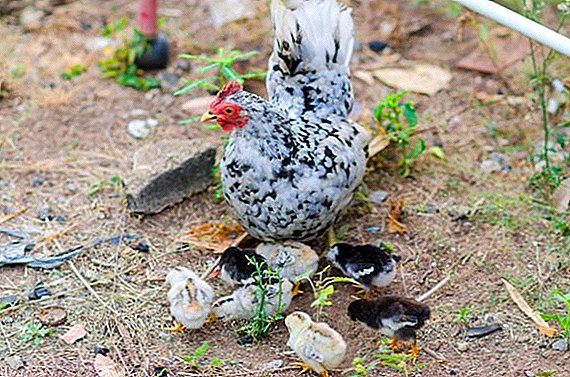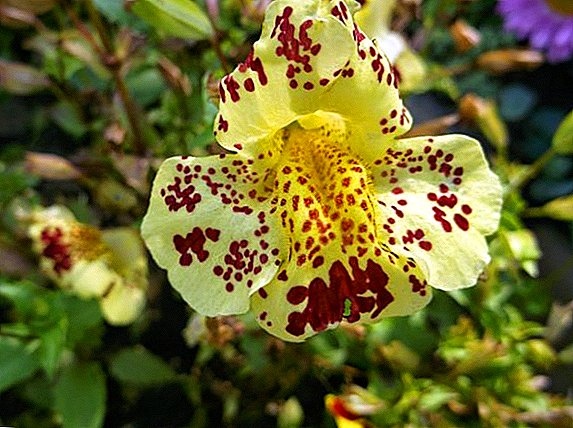 Mimulus - Ornamental plant, very popular with gardeners, also known as jastik flower. Mimulus is grown from seeds in open flowerbeds and as an indoor flower.
Mimulus - Ornamental plant, very popular with gardeners, also known as jastik flower. Mimulus is grown from seeds in open flowerbeds and as an indoor flower.
The most popular are the two types of mimulus - leopard and winter sunset. The first is characterized by very beautiful velvet bright yellow flowers, covered with maroon spots on the edges, similar to a leopard skin.
At winter sunset flowers are covered with luxurious dark pink spots on a light background.
Did you know? The history of the name of the plant has several versions. According to one of them, the etymology of the word Mimulus is associated with the Latin word mime - magician, mime. The other one connects the name with the Latin word mimo - monkey. In favor of this version, we can say that the halo of a mimulus is similar in shape to a monkey's muzzle. Americans even call this plant monkey flowers - monkey flowers. However, in our country, for the lower petal pushed forward and the upper flower bent back, they call it gubastik.
Growing mimulyusa through seedlings
 Mimulus - perennial plant, however, it is usually planted in the middle lane every year. Seeds of mimulyus very small, almost like dust. In one gram you can count up to seven thousand tiny seeds. They may be dark or light.
Mimulus - perennial plant, however, it is usually planted in the middle lane every year. Seeds of mimulyus very small, almost like dust. In one gram you can count up to seven thousand tiny seeds. They may be dark or light.
Sowing seeds mimulyusa possible in two ways - through seedlings or directly into open ground.
When to sow seeds for seedlings
Planting mimulyus seedlings is carried out in special cells for seedlings, which are subsequently installed on the windowsill, on the balcony or in a heated greenhouse.
When to begin sowing mimulyus to seedlings, depends on the climatic zone and weather conditions: in southern latitudes, it is safe to start sowing as early as the end of February, in colder areas, it is better to postpone the sowing of the sponge until the end of March or even until the beginning of April, because when it is time to plant seedlings in open ground, it should not be too high, otherwise harder to root.
We select the soil
Mimulus grows well on the soil rich in organic fertilizers, so the soil for the seedlings should be chosen nutrient with low or neutral acidity (pH level from 5.5 to 5.8). You can use the universal soil from the store, but it should be added sand, because the plant prefers loose soil, as well as peat, humus or other organic matter.
 The ideal soil for seedlings mimulyusa is considered a mixture of turf and leaf soil, peat, sand and humus in a ratio of 1: 2: 1: 1: 3. In any case, the ground in the container for seedlings should be soft, moist and breathable. Also do not forget about a good layer of drainage.
The ideal soil for seedlings mimulyusa is considered a mixture of turf and leaf soil, peat, sand and humus in a ratio of 1: 2: 1: 1: 3. In any case, the ground in the container for seedlings should be soft, moist and breathable. Also do not forget about a good layer of drainage.
How to sow small seeds mimulyus
The microscopic size of mimulus seeds determines the seeding technology.
Important! Do not dig in the seeds too deeply; this can critically affect germination.
After sowing the seeds in prepared cassettes, cover them with glass or film so that the earth does not dry out. For this you can also use transparent disposable cups, if necessary, pre-cut to the desired height.
How to care for the first shoots
If the seeds are sown correctly, the first shoots may appear within a week. At a cooler room temperature (up to 18 ° C), the seeds will emerge somewhat later. Water the land at this time can not - mimulus seed is very delicate, it can be damaged even by a slight pressure of water. To keep the earth moist, it needs to be tidy spray.
 When the first shoots of mimuly appear, control over soil moisture needs to be strengthened - on the one hand, gentle shoots need a soft and not dried soil, on the other hand, an excess of moisture can lead to plant rot and the formation of an unpleasant fungal disease called "black leg".
When the first shoots of mimuly appear, control over soil moisture needs to be strengthened - on the one hand, gentle shoots need a soft and not dried soil, on the other hand, an excess of moisture can lead to plant rot and the formation of an unpleasant fungal disease called "black leg".
After the seedlings form the seedlings, the containers are moved to a cooler place (10-15 degrees) so that the seedlings do not develop too quickly. At the same time it is necessary to reduce the intensity of irrigation, too wet soil is detrimental to seedlings. For the normal development of seedlings mimulyus lighting should be good enough.
Dive seedlings in separate containers
Two weeks after the emergence of shoots, when the seedlings designed 2-3 true leaves, it should be swoop down. Too small seeds of spongy do not allow them to be sown evenly, therefore the seedlings are very crowded. In such conditions, plants can not grow normally and interfere with each other.
Correctly chosen time for picking - appearance of the first roots of seedlings from the bottom opening of the container. With the right timing for sowing and normal germination at this point, the seedlings need to be indoors for about one and a half months, and not in open ground. But too small a container and an abundance of neighbors will have a bad effect on growth.
 Therefore, at this moment the plants should be transplanted into larger containers so that the seedlings have enough space for further development. One-time paper, peat or plastic cups of 150-200 g are well suited for transplanting.
Therefore, at this moment the plants should be transplanted into larger containers so that the seedlings have enough space for further development. One-time paper, peat or plastic cups of 150-200 g are well suited for transplanting.
In each such glass you can carefully transplant four plants.
Before picking, seedlings should be watered well and left for a few hours so that the earth is sufficiently moist. Pod each seedling should be a small spatula, a pencil or a stick for sushi, but it is better still that the surface was flat. You cannot take a sprout by the foot, you can only support the seed leaves.
Pulling a seedling, you need to carefully pinch his main spineto stimulate the development of the root system. Then the seedling is dipped into the prepared recess in the soil of the new pot just below the point of growth. This method speeds up the rooting process and facilitates the subsequent major transplant.
Planting of the grown seedling mimulyus on a flower bed
The seedling of mimulyus is very gentle and fragile; however, it has one indisputable advantage: with proper planting and care of the seedlings, the plant develops very quickly. Due to this feature, young plants begin to bloom at the end of spring, it is important to have time to plant the seedlings on the flower bed.
When to plant seedlings
 If the spring was warm enough, and the sowing of seeds for seedlings was carried out too early, seedlings of mimulyusa can be planted in a flower garden without prior picks. However, in normal conditions, pickled seedlings land on a flower bed in late May.
If the spring was warm enough, and the sowing of seeds for seedlings was carried out too early, seedlings of mimulyusa can be planted in a flower garden without prior picks. However, in normal conditions, pickled seedlings land on a flower bed in late May.
By this time, the plant should already grow well and get stronger. The ideal age of seedlings before planting is 6-8 weeks.
Planting plantation seedlings
The mimulus is planted in loose and pre-fed soil with humus and peat in a place that is not too sunny, as this plant can burn and die under the scorching rays. Planting seedlings need not too heap, the distance between individual instances should not be less than 20 cm.
Good news for those who are interested in how long after planting the mimulus blooms: If you grow a plant in a seedling way, you can admire flowering in the middle of May.
Other ways of planting and breeding mimulyus
The most common method of breeding mimulyusa is growing seedlings, but other options are possible.
Did you know? If several different types of mimulus are grown in a flowerbed, they are easily pereopolyat. Seeds collected from such plants may please in quite unexpected colors next year.
Planting seeds immediately in open ground
 If you do not want to potter with seedlings, you can sow a sponge directly on a flower bed. The negative side of this method in the first place is later flowering, at the end of May or in June, when the transplanted seedlings are already in bloom, you can only begin to sow the mimulus in the open ground.
If you do not want to potter with seedlings, you can sow a sponge directly on a flower bed. The negative side of this method in the first place is later flowering, at the end of May or in June, when the transplanted seedlings are already in bloom, you can only begin to sow the mimulus in the open ground.
In the mimulus sown directly on the garden bed, the flowering period is postponed to the end of summer or even the beginning of autumn.
In addition, the mimulus sown in the open ground is usually weaker, with early sowing shoots can freeze, with late sowing, on the contrary, it can burn in too hot sun, so this method is not considered effective.
The temperature for planting mimulyusa in the open land should steadily reach 15 degrees of heat, preferably, even the air warmed even more. Sowed seeds must be immediately covered with foil.
Sowing depth, as in the case of seedlings, should not be too large. After the emergence of seedlings, when they are already quite strong, the plants must be arranged to the width, on which the seedlings are planted in open ground (20-30 cm between the specimens).
Cuttings
 Vegetative methods of reproduction of mimulus are considered more effective compared to sowing in open ground. So, in spring this plant can be propagated by dividing the bush, and in summer - with the help of green cuttings.
Vegetative methods of reproduction of mimulus are considered more effective compared to sowing in open ground. So, in spring this plant can be propagated by dividing the bush, and in summer - with the help of green cuttings.
This method is also preferable for the reproduction of valuable species of mimulus, since the seeds obtained from the mother plant do not always preserve the breeding qualities.
From an adult plant, after it has faded, a cutting is cut off, on which there must be at least two internodes. Such a stalk can be planted in the sand or agroperlite-peat mixture, covered with a film in order to avoid drying. In just three weeks, such a stalk takes root, after which it can be carefully transplanted to a permanent place.
Proper care of mimulyus on flowerbed
When caring for mimulus, good lighting is not so important (the plant may well be content with penumbra), as formation, watering and fertilizer.
Pinching the top - is it necessary?
Young seedlings gubastik need as early as possible pinch - this will provide the plant with good branching. The buds of the mimulus grown from seedlings appear soon after the landing (two or three new leaves - and the plant begins to bloom), so you should not miss the moment of pinching so that you do not have to tear the young buds.
 The formed bush looks much more elegant, it is very thick and grows quickly, and there are much more flowers on such a plant than on one that has not been cut. In order for a puff better to form and bloom more abundantly, it is also necessary regularly trim drying shoots.
The formed bush looks much more elegant, it is very thick and grows quickly, and there are much more flowers on such a plant than on one that has not been cut. In order for a puff better to form and bloom more abundantly, it is also necessary regularly trim drying shoots.
Watering and feeding
Watering mimulyus very important to carry out regularly in hot weather, to prevent drying out of the soil. Feed the plant to start in the seedlings: As soon as the sponge forms the first true leaf, it is necessary to add nitrogen and potash fertilizers to the water for irrigation.
Important! The soil under the mimulyus is not recommended to saturate with nitrogen, from which the plant begins to stretch too high in height, especially at high temperatures.
After planting mimulyus in open ground, starting from the third week, it is necessary to feed the sponge with mineral fertilizers for flowering plants, repeating the procedure 1.5 - 2 times a month.
In order to mimulyus better bloomed, it can be fertilized once or twice with magnesium sulfate.
Diseases and pests
 Mimulyus sometimes suffers from snails and slugsbut it comes from the over-wetting of the earth. If the place where the sponge is growing turned out to be too wet, the plant should be mulched using sawdust or straw for this purpose.
Mimulyus sometimes suffers from snails and slugsbut it comes from the over-wetting of the earth. If the place where the sponge is growing turned out to be too wet, the plant should be mulched using sawdust or straw for this purpose.
In addition to the above "black legs"which also arises from excessive irrigation, the mimulus often strikes powdery mildew. To combat the disease is necessary with the help of fungicidal drugs.
The use of mimulyus in landscape design
Mimulius is a very beautiful ornamental plant. It is widely used in flowerpots, planted along the paths, and also included in the landscape of alpine hills. Sponge can be planted to fill the bare spots on the site. Bright and beautiful flowers mimulyus luxuriously look alone, without additional "support". Nevertheless, the gubastik looks as good surrounded by plants such as buttercups, periwinkles, saxifrage, as well as phlox, rusp, astilba, ageratum.
 Landscape designers are very fond of mimulus for the fact that it serves as a good decoration of wet areas, artificial ponds or just shady areas of the garden, where other flowers feel uncomfortable.
Landscape designers are very fond of mimulus for the fact that it serves as a good decoration of wet areas, artificial ponds or just shady areas of the garden, where other flowers feel uncomfortable.
There are specially bred varieties of mimulyus, the stems of which, covered with luxurious flowers, hang picturesquely from a hanging pots. This is a real decoration not only of the open terrace, but also of the usual balcony in a city apartment.
Finally, certain types of sponge (red and copper-red) grow right in the water. Containers with these plants are lowered to the bottom of the reservoir (no deeper than 10 cm), and gorgeous flowers bloom on the surface.


